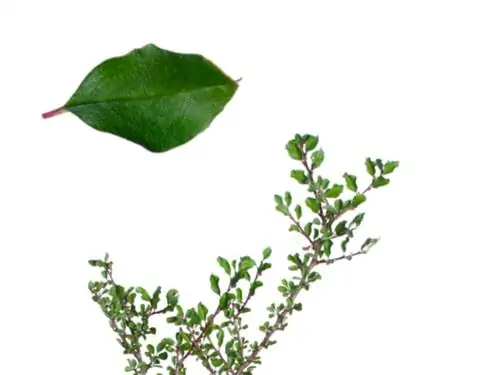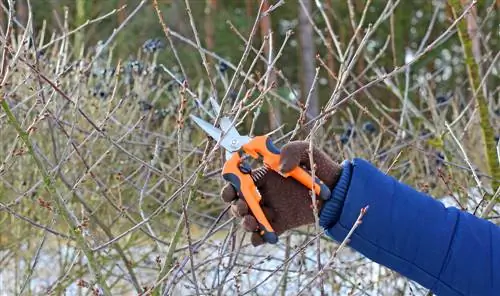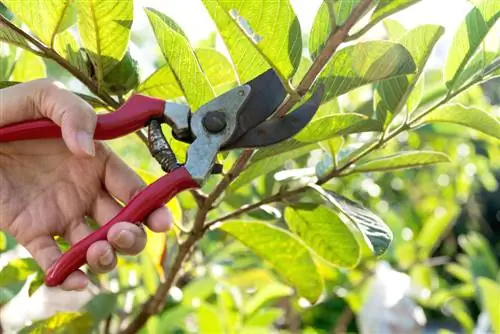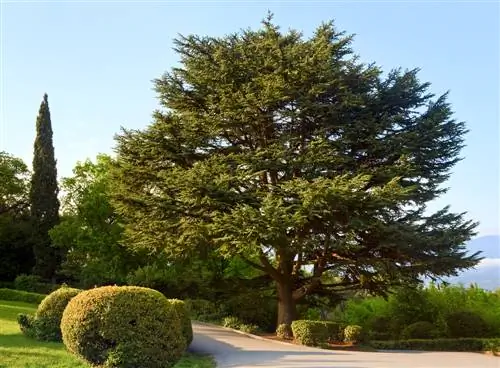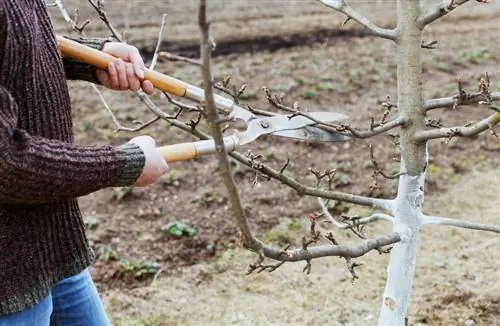- Author admin [email protected].
- Public 2023-12-16 16:46.
- Last modified 2025-01-23 11:22.
Only if you prune trees and bushes regularly can you enjoy flowers and fruit for many decades. Plants that bloom in summer or autumn should therefore be professionally cut back in February. We have great tips on how to do this correctly.

Why and how to prune trees and shrubs in February?
Trees and shrubs should be pruned in February to encourage vigorous sprouting in spring and to comply with the Federal Nature Conservation Act bird protection regulations. Use clean, sharp tools and note that not all plants can be cut in winter.
Why is cutting done in February?
In our climate zone, winter has proven to be a suitable time for this care measure. It makes pruning planning much easier when trees and bushes have no leaves and the structure of the branches can be seen. Winter pruning results in vigorous sprouting in spring and the tree then usually grows back particularly he althily.
In addition, the Federal Nature Conservation Act stipulates that trees and hedges may not be trimmed between March 1st and September 30th for bird protection reasons.
Can all trees be cut in winter?
You can prune most trees on frost-free winter days. However, this does not apply to plants that sprout early. It is best to cut these in autumn, when the tree or shrub has shed all its leaves.
The right cutting tool
To ensure that the tree trimming goes smoothly, you need these tools:
- Pruning Shears
- Folding and/or hacksaw
- Garden scissors
- oculating knife
Since the tools come into contact with an open injury to the plant, you should check it carefully before starting:
- Clean and disinfect the cutting edges thoroughly.
- Only use tools with sharp blades.
- Using a very sharp knife you can smooth frayed or torn branches and thus keep the wound area smaller.
What types of cuts are there?
How the tree is trimmed depends on what you want to achieve with the cut and how old the plant is. The following cutting types are used:
- Plant cutting: It promotes growth and crown formation. The tree is reset to the main shoot and three to four secondary shoots.
- Yield cutting: The crown of fruit trees is thinned out. This promotes fruit formation. Unnecessary green shoots, which would shade the fruits and cost the plant unnecessary energy, are cut out.
- Topiary cutting: This is where the tree is shaped. For example, you can reduce the crown diameter so that the plant casts less shadow or reduce the size of bushes so that paths become passable again.
- Relief cut: It is used to maintain he alth. This also averts the risk of branches breaking off during a storm.
Tip
You should under no circumstances cut at temperatures below five degrees below zero or in very wet conditions. In these weather conditions the wood can break and the cuts heal poorly.


